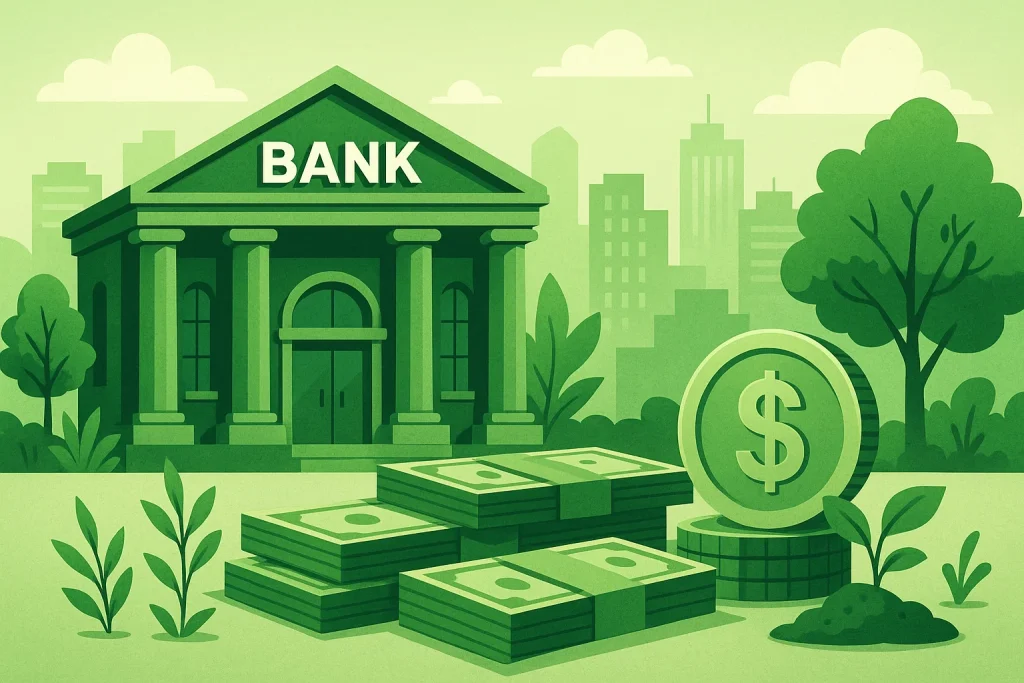In recent years, a growing number of financial institutions in the United States have begun to embrace environmentally conscious practices, giving rise to what are now commonly known as “green banks.” These institutions prioritize sustainability in their lending, investment strategies, and corporate governance.
This shift reflects not only changing consumer preferences but also increasing pressure from governments, investors, and advocacy groups. As the threat of climate change becomes more pronounced, the role of finance in fostering environmental responsibility is gaining importance.
What makes a bank “green”

A green bank is a financial institution that uses its resources to support environmentally beneficial projects. These typically include renewable energy, energy efficiency, clean transportation, sustainable agriculture, and water conservation.
Unlike traditional banks that prioritize returns on investment without necessarily considering environmental impacts, green banks evaluate both financial and ecological outcomes. They often fund projects that may not receive attention from mainstream investors due to perceived risks or lack of immediate profitability.
The role of government and policy in green banking
Government support has been essential in the development of green banks in the US. Federal, state, and local governments have implemented policies that not only encourage sustainable investment but also provide the infrastructure and capital needed to launch green financial institutions.
Several states have established their own green banks, such as the Connecticut Green Bank—the first of its kind in the US—and the New York Green Bank. These institutions have demonstrated how public funding can be used to de-risk private investment and accelerate clean energy deployment.
Investor demand and market trends
Another major driver of green banking is the increasing demand from investors for sustainable financial products. Environmental, Social, and Governance (ESG) criteria are now integral to the decision-making processes of many institutional investors.
The rise of green bonds, which are specifically earmarked for climate and environmental projects, has also contributed to this momentum. Green banks often issue these bonds to fund their initiatives, offering investors a way to earn returns while supporting sustainability.
Impact on communities and equitable access to capital
One of the most compelling aspects of green banks is their focus on inclusive and equitable access to clean energy. Many traditional banks have been criticized for excluding low-income and marginalized communities from financial opportunities.
For example, green banks frequently support community solar initiatives, allowing residents who can’t install panels on their own homes to benefit from renewable energy. They also offer financing for energy efficiency improvements in public housing and schools, reducing utility costs and improving quality of life.
Why consumers and businesses should care
For consumers, green banks offer a meaningful way to align their finances with their environmental values. Whether it’s through a sustainable savings account, a green mortgage, or a loan for an electric vehicle, these institutions allow individuals to make a positive impact without sacrificing financial performance.
Businesses also stand to benefit. Many green banks offer financing specifically tailored to small and medium enterprises (SMEs) pursuing sustainability goals. From retrofitting buildings to installing renewable energy systems, these loans can help businesses reduce costs, meet regulatory requirements, and enhance their brand image.
Conclusion
The rise of green banks in the US reflects a broader shift in how we think about finance and its role in society. No longer just a tool for wealth creation, finance is becoming a force for environmental and social change. Green banks exemplify this transformation, offering a vision of banking that is sustainable, inclusive, and forward-thinking.
As awareness of climate change grows and regulatory frameworks mature, green banks are likely to expand their influence and reach. Their success could encourage mainstream banks to adopt similar practices, driving systemic change in the financial industry. With the right support, innovation, and oversight, green banks have the potential to redefine what it means to be a responsible lender.



